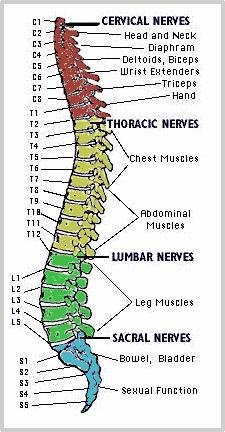Spinal Cord Injury
Perhaps the worst physical injury one can suffer is damage to the spinal cord. The most prominent example is Christopher Reeve, who one day was “Superman” and the next was a quadriplegic. We see some of our clients who have spinal cord injuries as super men and women too.
Inspired by them, we try to keep abreast of advances in medical treatment of spinal cord injuries. Understanding of the full range of effects of spinal cord injury — such as muscle spasticity, pressure sores and autonomic dysreflexia — well enough to explain them to a judge and jurors, is essential to trial advocacy for spinal cord injury survivors.

With our office just a few blocks from the Shepherd Center, one of the top rehabilitation hospitals in the nation, we are often called by family members of spinal cord injury victims. In working with people who have such injuries, we have been inspired by the resilience of the human spirit. Both physical and emotional aspects of spinal cord injury are devastating. However, one may work through the depression accompanying spinal cord injury to see that even under such adverse circumstances sometimes still the “glass is half full.”
Although most people know this type of injury can be a devastating diagnosis, not everyone knows there are many different types of spinal cord injuries. The location of the injury along the spinal cord determines what parts of the body are affected. Different types of spinal cord injuries include:
- Cervical Spinal Cord Injury: Affects vertebrae C1-C8 and causes paralysis or weakness in both arms and legs. This is also known as quadriplegia or tetraplegia.
- Thoracic Spinal Cord Injury: Affects vertebrae T1-T12. These injuries can cause paralysis or weakness of the legs along with loss of physical sensation, bowel, bladder and sexual function.
- Lumbar Spinal Cord Injury: Affects vertebrae L1-L5 and result in weakness or paralysis of the legs. This is also known as paraplegia.
- Sacral Spinal Cord Injury: Affects vertebrae S1-S5. Sacral level injuries mainly cause loss of bowel and bladder function as well as sexual dysfunction. They can also cause weakness of paralysis of the hips and legs.
Injuries can also be complete or incomplete. Complete injuries are indicated by a total lack of sensory and motor function below the level of injury, whereas incomplete injuries are marked by some remaining sensation and movement.
While much is taken, often much remains. Many people with spinal cord injuries surmount extreme adversity to lead productive lives. Jim Langevin became a quadriplegic at 16, and is now a Congressman from Rhode Island. Brooke Ellison has been a vent-dependent quad since age 11, but graduated from Harvard with honors. While these are exceptional people, they illustrate the fact that a useful life is still possible after spinal cord injury.












